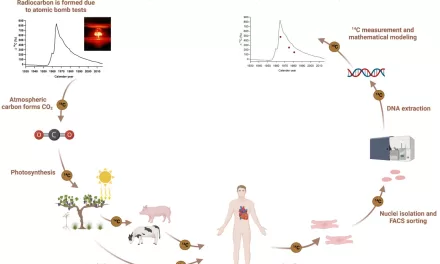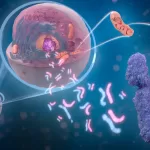A rare but serious complication of influenza, known as influenza-associated encephalopathy or encephalitis (IAE), has been reported in increasing numbers among children in the United States, according to a new analysis by the Centers for Disease Control and Prevention (CDC). The data shows a rise from no reported cases in the 2020-2021 flu season to a preliminary 14% of cases in the 2024-2025 season.
IAE encompasses a range of neurological conditions triggered by influenza infection in the respiratory tract. Diagnosis is based on the presence of brain lesions detected through imaging, as outlined by Dr. Amara Fazal and colleagues from the CDC’s National Center for Immunization and Respiratory Diseases. The CDC’s findings were published in the Morbidity and Mortality Weekly Report (MMWR).
The CDC launched an investigation following a series of anecdotal reports of pediatric IAE cases in January 2025. Their analysis examined data from the Influenza-Associated Pediatric Mortality Surveillance System spanning the 2010-2011 flu season through preliminary reports from 2024-2025. While no pediatric influenza deaths with IAE were recorded in the 2020-2021 season, the median proportion across the study period was 9%. However, early data from the current season (through February 8, 2025) indicated that nine of 68 pediatric flu deaths (13%) involved IAE, with four cases identified as acute necrotizing encephalopathy (ANE), a severe form of the condition.
Limited Surveillance and Implications
IAE remains a rare condition without dedicated national surveillance, posing challenges for comprehensive tracking. The CDC researchers acknowledged limitations in their study, including potential over- or underestimation of cases, incomplete data for the ongoing season, and an inability to determine the prevalence of less severe cases. Additionally, the absence of an established surveillance system prevents accurate comparisons of trends over time.
Nevertheless, the findings highlight the importance of clinicians considering IAE when evaluating children presenting with fever and neurological symptoms. These symptoms may include seizures, altered mental status, delirium, decreased consciousness, lethargy, hallucinations, or personality changes lasting more than 24 hours. ANE should be suspected in cases featuring rapid neurological decline and imaging-confirmed lesions.
In response, the CDC has issued a national call for reports of potential pediatric IAE cases during this flu season via its Epidemic Information Exchange (EPI-X) and has made contact available through severeflu@cdc.gov.
Expert Insights and the Need for Vigilance
Dr. Lori Handy, associate director of the Vaccine Education Center at the Children’s Hospital of Philadelphia and assistant professor of clinical pediatrics at the Perelman School of Medicine, emphasized the significance of tracking severe influenza complications beyond mortality rates.
“Influenza-related deaths are reported to the CDC, but severe manifestations such as IAE, which may significantly impact individuals without leading to death, are not consistently tracked,” Dr. Handy explained. “Understanding the epidemiology of circulating infectious diseases helps clinicians recognize and diagnose cases more efficiently.”
Dr. Handy also underscored the critical role of influenza vaccination in mitigating such complications. “When a disease is vaccine-preventable, both healthcare providers and the public must understand the full spectrum of its impact to fully appreciate the value of vaccination,” she said.
Although IAE is a recognized complication of influenza, its rarity means many healthcare providers may be unfamiliar with it. “The MMWR publication serves as a crucial alert for providers, helping them make a more rapid diagnosis and ensuring they deliver the best possible care to their patients,” Dr. Handy noted.
Call for Increased Awareness and Research
Healthcare professionals are encouraged to remain vigilant during flu season and to consider IAE in children presenting with febrile illnesses and neurological symptoms. As Dr. Handy advised, “Consider ANE if compatible neuroimaging changes are present, and if IAE is suspected, initiate antiviral therapy promptly.”
The CDC and experts stress the importance of improving surveillance, identifying cases, and fostering research to refine prevention and treatment strategies. “We must understand the full spectrum of disease, not just fatal cases,” Dr. Handy concluded. “By recognizing and reporting cases, we can work toward a better understanding of its frequency and ultimately enhance patient outcomes.”
Disclaimer: This article is for informational purposes only and does not constitute medical advice. Readers are encouraged to consult healthcare professionals for medical concerns or flu-related symptoms. The findings in this report are based on preliminary data and are subject to change as further analysis is conducted.












